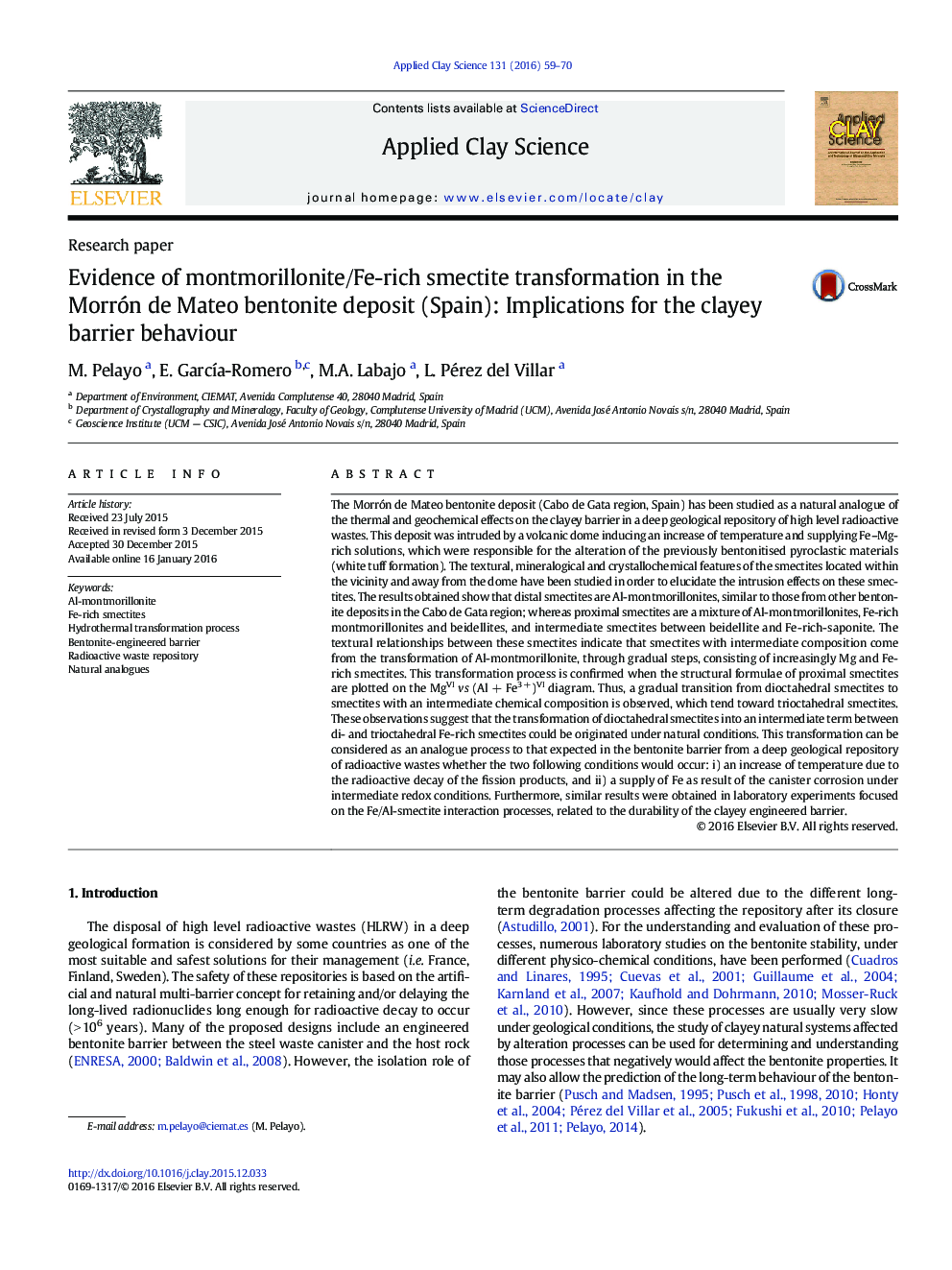| کد مقاله | کد نشریه | سال انتشار | مقاله انگلیسی | نسخه تمام متن |
|---|---|---|---|---|
| 1901371 | 1519055 | 2016 | 12 صفحه PDF | دانلود رایگان |

• A hydrothermal process was favoured by the intrusion of the Morrón de Mateo dome.
• This process originated textural, mineralogical and chemical changes in smectites.
• Al-montmorillonite was transformed into smectite between beidellite and Fe-saponite.
• This system can be a good natural analogue of the clayey barrier in a radwaste disposal.
• Similar results were obtained from Fe-smectite interaction laboratory experiments.
The Morrón de Mateo bentonite deposit (Cabo de Gata region, Spain) has been studied as a natural analogue of the thermal and geochemical effects on the clayey barrier in a deep geological repository of high level radioactive wastes. This deposit was intruded by a volcanic dome inducing an increase of temperature and supplying Fe–Mg-rich solutions, which were responsible for the alteration of the previously bentonitised pyroclastic materials (white tuff formation). The textural, mineralogical and crystallochemical features of the smectites located within the vicinity and away from the dome have been studied in order to elucidate the intrusion effects on these smectites. The results obtained show that distal smectites are Al-montmorillonites, similar to those from other bentonite deposits in the Cabo de Gata region; whereas proximal smectites are a mixture of Al-montmorillonites, Fe-rich montmorillonites and beidellites, and intermediate smectites between beidellite and Fe-rich-saponite. The textural relationships between these smectites indicate that smectites with intermediate composition come from the transformation of Al-montmorillonite, through gradual steps, consisting of increasingly Mg and Fe-rich smectites. This transformation process is confirmed when the structural formulae of proximal smectites are plotted on the MgVIvs (Al + Fe3 +)VI diagram. Thus, a gradual transition from dioctahedral smectites to smectites with an intermediate chemical composition is observed, which tend toward trioctahedral smectites. These observations suggest that the transformation of dioctahedral smectites into an intermediate term between di- and trioctahedral Fe-rich smectites could be originated under natural conditions. This transformation can be considered as an analogue process to that expected in the bentonite barrier from a deep geological repository of radioactive wastes whether the two following conditions would occur: i) an increase of temperature due to the radioactive decay of the fission products, and ii) a supply of Fe as result of the canister corrosion under intermediate redox conditions. Furthermore, similar results were obtained in laboratory experiments focused on the Fe/Al-smectite interaction processes, related to the durability of the clayey engineered barrier.
Journal: Applied Clay Science - Volume 131, October 2016, Pages 59–70